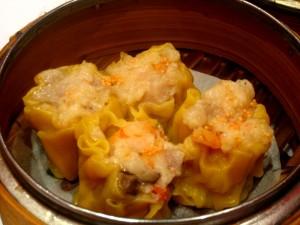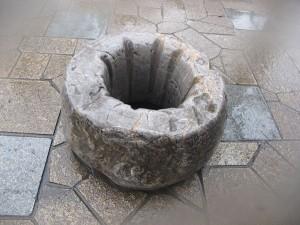When I’m in China, I often get the question- “What teas do Singaporeans drink?”
A simple question but given the cultural diversity of Singapore, the answer is pretty wide.
Consider that Singapore is a largely cosmopolitan culture- a former British colony with a predominantly South China migrant community, followed by Malays and Indians. Then there is the bludgeoning expatriate community with Europeans, Americans, Japanese and Koreans mixing with the locals.
This is evident in the local food culture, in a larger mall like Vivocity, you can find Spanish, Korean, Japanese, Italian cuisine in addition to local favorites. Food and tea culture is often intertwined, especially in East Asia and in Singapore it is possible to get access to a mixture of ‘English teas’ and Japanese teas in addition to Chinese teas.
Of course if Chinese tea is interpreted as tea from China or tea made and consumed in the ‘Chinese style’, it is a massive spectrum in its own right- spanning all 6 major categories and over a thousand varieties.
What does Chinese tea mean to Singapore?
Chinese tea in Singapore context- A Hometown Bias
The majority of Singapore Chinese are from the following dialect groups: Hokkien, Teochew and Cantonese, hailing from Minnan, Chaozhou and Guangzhou with Hainanese and Hakkas following behind.
When our forefathers came from China, they brought with them their own hometown culinary styles and preferences- hence you will often see the descriptions: Cantonese Dim Sum, Teochew Porridge, Hokkien Mee, Hainanese Chicken Rice and Hakka Yong Tau Foo, just to name a few.
Hence, it is no surprise that the popular Chinese teas in Singapore often mirror the preferences of our ancestors.
Tieguanyin
Tieguanyin or Iron Goddess of Mercy (Iron Goddess for short) is one of the most popular teas in Minnan (Southern Fujian)and Chaozhou and is produced in Anxi, Minnan.
In fact, before the 80’s when a combination of marketing and the advent of popularity of the ‘green style’ of this variety, Tieguanyin is predominantly produced for export, especially to South East Asia and other migrant Chinese communities.
 Pu-er
Pu-er

In this part of the world and especially among casual tea drinkers, Pu-er is virtually synonymous with Dim Sum. Although Pu-er is grown and produced in Yunnan (including the township from which it got its name), it is among the Cantonese (especially Hong Kong) that it gained the most rabid following.
Today in Singapore, Pu-er remains a staple of Cantonese restaurants, a phenomenon that is mirrored in Cantonese communities around the world.
Jasmine Tea
Also known as Xiang Pian (香片) or literally ‘Fragrant Leaves’, the best jasmine teas are produced in Fuzhou, Fujian. Despite its name, jasmine teas are not petals of jasmine flowers but green tea leaves scented with jasmine flowers. Well-made jasmine teas have fragrances that last through several infusions and smell pleasant and natural.
It is a favorite of local tea drinkers for its pleasant, calming fragrance and lighter taste.
Fujian and Guangdong Oolongs
Besides Tieguanyin, other Fujian and Guangdong oolong have a large following among local Chinese tea aficionados include Shuixian, Dancong and Dahongpao.
One of the main reasons other than hometown bias is freight. In the early days, much of trade was conducted via sea and the freighters of yore are nothing compared to the Panamax liners of today, chugging at 4 knots as opposed to somewhere near 20 knots for the larger container vessels of today.
Shipping green tea – what with the difficulty of moisture protection in a junk’s hold- would be a hairy task then and probably that at least partially explains why green tea didn’t enjoy global popularity earlier.
As a result, oolong tea is very much a staple of local tea consumption, as well as early Chinese migrant communities.
The Evolving Landscape of Local Chinese Tea
China Tourism

If you are traveling with a tour group, a very common place of interest that tour guides bring you to would be the scenic tea producing areas such as Hangzhou, Huangshan and Wuyishan
For many, it is the first time they experience Chinese tea outside of restaurants. The combination of proper brewing, spring waters and the environment results in an amazing gastronomic experience for these tourists.
After a (probable) once in a lifetime visit to these tourist spots, many of the aforementioned tourists can’t forget the divine taste of those teas and a love affair with teas sprout. Longjing (aka Dragon Well) and Huangshan Maofeng are among some of the teas that have gained popularity in this manner.
Health Concerns
With numerous researches emerging on the link of tea and health, may are turning to tea for its health properties. Unfortunately more often than not, those who are enticed by the health benefits are not finicky about the taste aspect of tea.
“Give me green tea?”
“What kind?”
“Just any organic green tea.”
I will go out on a limb and say teas that are labeled “organic green tea” won’t be winning any tastes awards anytime soon (not that I would be wont to put much stock in it) but it was not the main draw. Another category of teas that has gained popularity in this manner are white teas.
Tourism in Taiwan
One of the most popular souvenir of Taiwanese tourists are its teas, especially the Taiwanese ‘High Mountain Teas’ which is a generic term for all teas grown at elevations of 1,000 m and above.
With Taiwanese varieties shows being a staple of local television, interest in Taiwanese destinations is understandably piqued. Alishan, Lishan and San Lin Xi are some of the common varieties (or more accurately mountains) that has made its way into the local tea landscape to join Dong Ding and Wenshan Baozhong.
The Next Stage
Hopefully as China improves its image and marketing, a greater range of Chinese (and Taiwanese) teas will make its way into Singapore shores.
